
Traditionally, Indian seasons– Ritus – are six, each of about two month’s duration. In the part of the country where I now live, in Southern Karnataka, there are virtually five seasons: a short spring, summer, monsoon, post monsoon and winter, where Hemanta and Shishira run into each other. Each of the seasons, – Ritus – has a beauty and splendor of its own. Sadly, we have lost the links with nature; as also with the songs and the Ragas inspired by nature.
Ritu is a division of the year , reflecting the change of seasons. The concept of Rtu occurs in Rig Veda also, where only three Ritus are mentioned: Varsha , Grishma and Sharad. Later, the year was further divided; and, two more Rtus were added. A hymn in Taittareya Brahmana has a beautiful graphic presentation of the Ritus in the image of a bird: Vasantha is the head of the bird called Samvathsara (year); Grishma its right wing; Sharad its left wing; Varsha its tail; and , Hemanta its middle part.
Tasya re Vasantha shirahah/Grishmo Dakshina pakshahah/ Sharad uttara-pakshhah/Varshap pucchyam/ Hemanto Madhyama. (TBrh: 1.10.4.1)
It was during the epic period that the seasons were counted as six: Vasantha – spring; Grishma – summer; Varsha – rainy season; Sharad – autumn; Hemanta – winter; and, Shishira – cool season preceding the spring.
The Puranas (say, the Brahmanda Purana) mention six seasons. The Matsya Purana has a whole chapter dedicated only to the month of spring; and, the Samba Purana gives a reference to the different colors of the sun in the Six Ritu’s : Kapila (tawny or yellowish-brown) in Vasantha Rtu ; Tapta-kanchana (furnace gold) in Greeshma ; Sweta (white) in Varsha Rtu; Pandu (pale) in Sharad Rtu; Pingala (coppery or reddish brown) in Hemanta Rtu; and , Raktha (reddish) in Sishira Rtu.
The Chitrasutra of the Vishnudharmottara-purana (5th– 6th century), however , mentions four Ritus; and, outlines their general features.
Summer : Under trees, languorous men seek shade from the harsh summer sun, buffaloes wallowing in the mire of muddy waters, birds hiding under a thick abundance of leaves, and lions and tigers seeking cool caves to retire in.
Rain: An overcast sky, with heavy rain filled clouds weighed down with their aquatic excess, flashes of lightning and the beautiful rainbow, animals like tigers and lions taking shelter in caves, sarus (cranes) birds flying in a row.
Autumn: Trees laden with ripe fruit, the entire expanse of the earth filled with ripened corn ready for harvest, lakes filled with beautiful aquatic birds like geese, the pleasant sight of blooming and blossoming lotus flowers, the moon brightening up the sky with a milky white luster.
Winter : the earth wet with dew, the sky filled with fog, men shivering from the cold, but crows and elephants seem euphoric.

Two sets of calendars – solar and lunar – for the twelve months of the year were developed over a period. And, the names of the months of the solar year , at one time , carried different sets of names.
The names of the months , according to solar calendar (Sauramana) , in each of the six seasons (Ritus) are: Vasantha (Madhu and Madhava) the sweetness of spring; Grishma: (Sukra and Suci) the blazing light of summer; Varsha: (Nabha and Nabhasya ) the monsoon rain bearing clouds; Sharada : (Urya and Isa) the fertility and mellow of autumn; Hemanta: (Saha and Shahya ) the cold and winter; Sisira: (Tapa and Tapsya ) the beginning of the hot season.
It is also said; these were the names used in the ancient days. For instance; the Maitrayani-Samhita of Krishna Yajur Veda enumerates the very set of names of the months .
madhuś ca mādhavaś ca vāsantikā ṛtū agner antaḥśleṣo ‘si // śukraś ca śuciś ca graiṣmā ṛtū; nabhaś ca nabhasyaś ca vārṣikā ṛtū; iṣaś urjaś ca śāradā ṛtū ; sahaś ca sahasyaś ca haimantikā ṛtū; tapaś ca tapasyaś ca śaiśirā ṛtū agner antaḥśleṣo ‘si //MS_2,8.11//
*
The names of the months of the lunar calendar (Chandramana) in the respective seasons are: Vasantha (Chaitra and Vishakha); Grishma (Jestha and Ashada); Varsha (Shravana and Bhadrapada); Sharada (Ashvina and Kartika); Hemanta (Margashira and Pushya); and, Sisira (Magha and Phalguna).

*
Srimad Bhagavatha -Purana(Skanda-4; Chapter-2) lists the Adityas, Rishis, Yakshas, Rakshas, Nagas, Gandharvas and Apsaras , associated with each month of the year .But, here, the names of the months , their sequence and the related Adityas slightly differ.
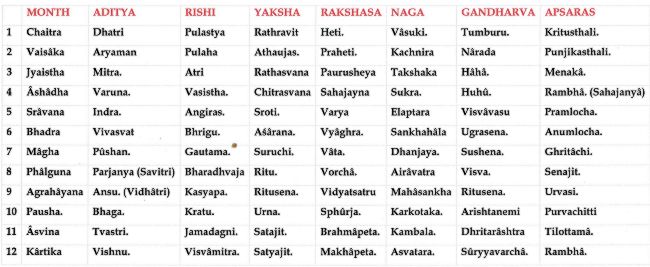
***
It is said, in the ancient days; the month of Margasirsha also known as Agrahayana was at the head of the twelve-month period; which is to say, it marked the commencement of the year from the vernal equinox. But, in the later periods the sequence of the months was changed to what we are familiar with now. And, similarly, the Nakshatras were reckoned from Krittka; and, not from Ashvini, as of now. The scholars opine that during the period when the sun was near Orion at the time of the vernal equinox, i.e. around 3000 years ago or more, the year was reckoned as commencing from the month of Margasirsha (Agrahayana).
And, Margasirsha was the best , most auspicious and the most enjoyable of all the months of the year ; neither too hot nor too cold, neither too wet nor dry; when the udders of the cows are full of milk. And, it was also the harvesting season when the long months of hard work fructified. There is a sense of peace and joy enveloping all existence.
The Mahabharata war is believed to have commenced on the eleventh day of the bright fortnight of Margasirsha (Agrahayana) – Margashirsha Shukla Ekadasi, when the star Krittika was in ascendancy. And, it was on the First Day of the Great War that Lord Krishna delivered the celestial Bhagavad-Gita.
In the Bhagavad-Gita, Krishna says that among the months, he is the Margashirsha – Masanam Margashirsha nam- Bhagavad-Gita. 10.35

[Alberuni c.1030 observed that Vasudeva Krishna had a special place in the hearts of the common people who loved to call him by many names. He says , people called out Krishna , out of sheer love , by different names in each of the twelve months; such as : in Margasirsha: Keshava; Paushya: Narayana; Magha: Madhava; Phalguna: Govinda; Chaitra: Vishnu; Vaisakha: Madhusudana; Jyestha: Trivikrama; Ashadha: Vamana; Shravana: Sridhara; Bhadrapada: Hrishikesa; Ashvayuja: Padmanabha; and , Karttika: Damodara .]
[The earliest inscriptional reference to Indian seasons and months appears on the Edicts of Emperor Asoka (c.272 B.C.) found at Dhauli and Jaugada. It mentions Tisya Naksatra (Tisya or Pausa) and Chaturmasi (full moon in all seasons). The casket inscription from the time of Meander (c. 115-90 B.C.) at Shinkot is the earliest known inscription to mention a month. It refers in Prakrit, to two months – Karttika and Vaisakha in connection with the relics of the Buddha.]
*
The Solar year (Sauramana) was based on ‘solar division’ – the diurnal motion of the Sun ; and, the Lunar year (Chandramana) was based on the ‘lunar division’- the phases of the moon .
The solar year is approximately 365 days and the months are calculated by the sun’s entrance into a particular Rasi or Zodiac sign. These are divided into twelve, Mesha (Aries), Vrsabha (Taurus), Mithuna (Gemini), Kartaka (Cancer), Simha (Leo), Kanya (Virgo), Tula (Libra), Vrscika (Scorpio), Dhanus (Sagittarius), Makara (Capricorn), Kumbha (Aquarius), and Mina (Pisces).

The Lunar calendar is roughly around 354 days; ten less than the solar year(*) and its months are named after Nakshatras or constellations in which their full moons are placed. The lunar months lasts from one new moon to the next but it is named after the Indian solar month in which it begins. As mentioned earlier, the lunar month are Chaitra and Vaishakha for spring (Vasantha) ; Jyestha and Asadha for summer (Grishma); Sravana and Bhadrapada for the monsoon (Varsha); Asvin and Karttika for the autumn (Sharad); Agrahayana and Pausha for winter (Hemantha) ; and. Magha and Phaguna for later cool season (Shishira).
The poets have sung of the glory of each season either individually or as a garland of seasons. The Great Kalidasa’s Rtu Samhara is of course the most celebrated of all such romances of the six seasons.
[* It is said; a Solar year actually measures 365.2422 days; while a Lunar year is shorter having only 354.372 days ; the difference between the two reckoning being 10.8702 days , each year. In order to reconcile the difference between the two calendars, an additional month is added to the Lunar calendar once in three years. Such additional month is termed as Adhika –masa. And, the year in which such Adhika-masa is added would thus have 13 months, as compared to 12 months in other years. In the cycle of 36 months, the Adhika-masa would be the 33rd month; and, would commence from the close of the 32nd month – that is , from next day of full moon and up to end of Amavasya. The Adhika-masa would actually measure 32.6106 days.]

It is the post monsoon season – Sharad Ritu, which is dearer to me. It is a season of festivals marked by benevolence, grace and beauty. As per the lunar calendar, Sharad Ritu follows the Varsha (monsoon) and precedes Hemantha (early winter). It comprises months of Ashvina and Karthika, which is September to November months in the Gregorian calendar. In the year 2007 , Sharad Ritu commenced from Oct 12, Sharad Ritu corresponds to early autumn in the West but it is not the same.
The nature is at its benevolent best in Sharad Ritu. The oppressive heat of the summer is a distant memory and the chill of the winter is still on its way. The annoying downpour of the monsoon has just ended. The weather is mild, pleasant and refreshing. Sharad is a season of moderation, comfort and peace. It is the season of the middle path. It is a soothing delight, as its designated Raga Malkauns a pentatonic haunting melody. The rivers are neither dry as in summer nor flooded, muddy brown, twirling with orphaned twigs and overflowing menacingly as in monsoon. In Sharad Ritu, the rivers are moderately full, transparently clear; rippling down the gentle slopes in peals of temple bells.
Sharad Ritu brings a blush to the countryside. The nature is bedecked as a bride with light green, decorated with profusion of colorful flowers and bountiful laden fruit trees with chirping birds. There is peace, joy and fulfillment abounding in the air.
The days are sunny, yet pleasantly cool and comfortable. The skies are clear blue with white cotton clouds floating lazily. The nights mildly intoxicating are slightly chill, clear and cloudless.
Srimad Bhagavatam describes the resplendent beauty of Sharad Rtu in Venu Gitam (Canto 10):
ittham sharad svaccha jalam padmakara sugandhina /nyavishad vayunavatam sa gogopala kochyutaha / kusumita vanaraji sushmibhrunga dvijakula gushta sarah sarIn mahidram / madhupatir avagahya charayangAha saha pashupAla balahaschukUja veNum //
It says; the water is pure, fresh and playing host to the beautiful lotuses waiting to bloom. In the autumn, the monsoon clouds too have disappeared, making way for clear sunshine; the lotuses bloom and spread their fragrance everywhere –padmakara sugandhina.
Flower buds, that had hitherto been soaked and ruined by incessant monsoon rains, now bloom joyfully–kusumita vanaraji – adorning the trees with colour. The aroma and nectar of these flowers attract the buzzing honey bees (sushmi bhrunga). With fragrance, color and cheer all around, can the cuckoos and peacocks help themselves but sing and dance to their hearts content – dvija kula gushTa sarah sarin mahIdram.
In Sharad Ritu, the cows graze happily and produce abundant milk, bringing prosperity all around.
**
In certain regions of India, the bright, soothing and joyful Sharad Purnima, is celebrated as a harvest festival; and, is known by other names such as : Kumаrа Рurnimа, Kоjаgiri Рurnimа, Nаvаnnа Рurnimа, Аshwin Рurnimа оr Kаumudi Рurnimа.
It is believed that on the Sharad Purnima, the moon glows with all its sixteen phases (kalas). On this night, the sky is clear; and, the moon is at its largest, brightest; shining without a blemish.
On this auspicious day, many divine pairs like Radha Krishna, Shiva Parvati, and Lakshmi Narayan are worshipped ; and, are offered flowers and kheer (sweet dish made of rice and milk).

The splendid cloudless full moon night of Sharad Ritu is an idiom of glory, peace and joy in the Indian poetics. It is the delight of eager young lovers that long to be with their beloved. The ecstatic beauty of Sharad Purnima is etched in Indian psyche. Its glory, tenderness and joy are celebrated in songs, legends and poems of love. Our classical poets and epics sing lovingly the beauty and joy of the delightful moonlit nights of Sharad Ritu.
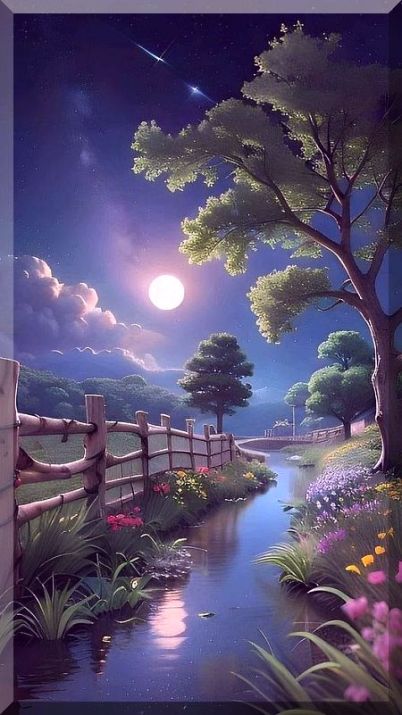
Soundarya-lahari, meaning waves of beauty, a tantric work in poetic form dedicated to the Mother, in devotional ecstasy, calls her Saratchandra Vadana, one with a face as radiant and blissful as the moon in Sharad Ritu. And, Goddess Sarasvathi is described as Sharad-indu Sundara Vadane – having a blissful radiant face as beautiful as the moon of the Sharad Rtu.

The tradition of Rtu-Varnana, describing the seasons, became frequent when such descriptions came to be recognized as a mandatory feature (ashta-dasha –varnana, eighteen types of descriptions) of a Maha-kavyas the major epic like poems
The classical Indian poetry abounds with expressions like Sharadendu vilasam (the glory of the moon lit nights of Sharad), Sharath-chandrika – dhavala-prakasham (glorious brightness of Sharad) etc. The food – loving court jester encouraged by bright cool comfort and a feeling of luxury compares Sharad night, gleefully, to curd rice and ghee (Gritha-supa-samanvayam).

It was under the resplendent full moon of Shard Ritu, amidst the mango and Kadamba groves along the banks of the gentle flowing Yamuna that Sri Krishna and Gopis enacted their celestial dance Rasa Leela. It was the night; the haunting melody of Krishna’s flute enraptured the hearts of Gopis. Srimamad Bhagavatham sings the glory and joy of Rasa Leela with love and divine ecstasy. Every region and every language in India cherishes at its heart in lyrical rapture the love, graceful beauty and bliss of that Sharad Purnima. Year after year the devotees throng at the Vraj-bhumi on the Sharad Purnima under the heavenly glow of the scar- less full moon , to re enact Rasa Leela with longing and elation as an act of devotion and humble tribute to the love of Krishna and the Gopis.
The Great Poet Valmiki in his Epic Ramayana (4.29.27) talks of ‘The Mountains washed spotless by great clouds and their glittering peaks now shine as if bathed in moonbeams’.
abhivṛṣṭā mahāmeghair nirmalāś citra-sānavaḥ | anuliptā iva ābhānti girayaś candra-raśmibhiḥ ||
Kalidasa the great poet of ancient India in his Ritu-Samhara (song of the seasons) sings of the “golden plenitudes” of Sharad Ritu in passages of high lyrical imagery. (RS.3.21- 3.28) Sharad is the season of slenderness and grace; cool as the sandalwood (candanaṃ candra-marīci-śītalaṃ); of clear moon (śarad-indu-nirmalam); of radiant moon (vimala kiraṇa candraṃ); and of light, floating, soft colored silks. Kalidasa fondly talks of cheerful women dressed in light-hearted elegance of “silks dyed scarlet with mallow juice, delicate silks saffron dyed and shining pale gold veils”- anupama mukha rāgā rātrimadhye vinodaṃ śaradi taruṇa kāntāḥ sūcayanti pramodān – KalRs_3.24 .
He compares Shard Ritu to a bride; decked in white as the moon and the swan, adorned with jewels and flowers; moving with gentle grace like the rivers in Shard Ritu. The sky scattered lightly with thin clouds is as a king fanned with a white fly-whisk. The women adorn their hair with jasmine and ears with blue lotus; pine for the beloved. The travelers see in the lotuses the dark lustrous eyes of their beloveds; in the infatuated swans, they hear the tinkle of the beloveds’ golden girdle; and in Bhandu-jiva, flowers look for the gleam of their coral lips. Travelers sigh and pine for their beloveds – bandhujīve priyāṇāṃ pathika jana idānīṃ roditi bhrānta-cittaḥ- KalRs_3.26.

Viśākhadatta in his Mudrārākṣāsa (3.8) sings the tender grace of the Sharad : The tumult of the rains gradually gives way to the stillness of Sharad. The sky is free of clouds, water grows clear at the rise of the star of Agastya (not surprisingly says one poet – they heard he swallowed the ocean in one mouthful and are scared stiff) and the torrents of the monsoon become gently meandering rivers once again. The sound and light special effects – flashes of lightning, drumbeats of thunder – are replaced by a finer beauty, characterized by the superfluity of white, in the bright moon, the swans, the lotuses and the tall kāśa grass. The world is freshly washed and now sparkles in the sun:
Apām uddhṛtānāṃ nijam upadiśantyā sthitipadaṃ Dadhatyā śālīnām avanatim udāre sati phale |
Mayūrānām ugraṃ viṣam iva harantyā madam aho I Kṛtaḥ kṛtsnasy’ āyaṃ vinaya iva lokasya śaradā ||
And, Bhāravi, in his Kiratarjuniya, describes a river whose sandbanks white cows are gradually leaving as if her white silk robe was slipping down.
**
This tradition of Rtu-Varnana occasionally spilled into Dramas. For instance, in the Bhana plays of the Gupta Era (4th-6th centuries) the tradition set by Bhasa and Kalidasa was continued by including songs singing the glory of one or the other season.
Let me say a few words about Bhana plays (a type of Rupaka) because not many of the Bhana plays have survived. . The Bhana plays are essentially short dramatic presentations (Prahasana) or burlesque one-act plays which , flippantly, satirized the respectful figures in the society . They are different from elegant Sanskrit court-plays. They deal with the common place and the trivial. They expose the seamy side of urban life and of the court officials, in particular ; and, debunk the hypocrites moving under the guise of the virtuous.
These short plays were , usually in monologue, featuring a single actor who assumes the role of a Vita (paramour) or a Dhurta (rouge, swindler, gambler or cheat) . He is described as : a clever and shrewd parasite who describes roguish exploits (on subjects invented by himself) through imaginary conversations engaged with himself or with some one else or with imaginary persons (akasa-bhasita).
Generally the eloquent Style is employed ; the subject, which is invented by the author, is treated in a single Act. The Bhana has two Junctures, the opening (mukha) and the conclusion (nirvahana), with their subdivisions.
bhanas tu dhurtacaritam svanubhutam parena va / yatropayarnayed eko nipunah pandito vitah / sambodhano -ukti-pratyukti kuryad akasabhasitaih / sucayed vlra-srngarau saurya-saubhagya-samstavaih/ bhuyasa bharati vrttir ekankam vastu kalpitam / mukha-nirvahane sange lasyangani dasapi ca.
Singing and music, from background , precede and close the performance; and in between also give musical effects to the imaginary conversations that the single actor carries on.
.
Usually, the narrator is a Vita who loiters in the locality of the courtesans where he is a familiar figure and picks up conversation with whoever passes his way. He also calls on any courtesan at his sweet will.
Vita is a very interesting character in the plays of this genre. He narrates dramatically, a variety of occurrences as happening either to himself or others. He is generally a cultured, shrewd; but a deprived person; but, very familiar with the ways of the courtesans (vaisika sastra). He is quick-witted and knows how to manipulate courtesans through flattery and sweet-talk . He is truly the man of the world; gifted with jab of the tongue, wit and humor; and has familiarity with arts, poetry etc. He has also a strong sense of friendship and ever ready to help the needy. But his special interest is in enjoyment of worldly pleasures, and the sensuous company of the cheerful, fun-loving courtesans.
On the flip-side; a Vita would usually be one who was once wealthy; but squandered it all through misplaced trust or sheer gullibility or in gambling . Quite often, his family would have disowned him tired of his reckless and irresponsible ways. He is also disappointed in love.
In other words: basically , he is good at heart; but, a looser, incompetent or unable to succeed. He is described as a gallant parasite (Vita) who preys on courtesans and their paramours.
The Dhurta- vita-samvada presents the picture of one such seemingly clever , experienced, but worn-out Vita, who finding the rainy season too depressing, comes out seeking some amusement. He has no money either for a game of dice or for a drink — even his clothes are reduced to one garment. He , then , wends his way towards the street where courtesans live, transacting with their clients of various kinds . He , sadly, cannot afford a courtesan, either. At the end, dragging his feet, he reaches the house of the roguish couple Visvalaka and Sunanda, who were then busily engaged in a discussion on certain awkward problems of sex-act. He gleefully joins the discussion.
Vatsayana in his Kama -sutra has immortalized the Vita characters.
The three playwrights of this period scripted Bhana plays to highlight the features of certain seasons: Padma-prabhrur-takam (by Shudraka) and Ubhaya-abhisarika (by Vararuchi) described Vasantha the spring, while Dhurta-vita-samvada (by Isvaradatta) described Varsha the rainy season. The last mentioned also carried brief descriptions of Sharad, Grishma, and Vasantha Rtus, as in Kalidasa’s epic poem.
Here is a simplified and abridged version of Sharad as in the Dhurta-vita-samvada:
In the Shard Rtu the veil of the clouds vanishes; moon shines up in the blue night sky; breeze is gentle and pleasant; and whole of delightful existence is filled with intoxicating fragrance of flowers withering gently from the Aasan trees; the lover swims in the scented lotus pond with his beloved who as the Chakravaka bird is well versed in the secrets of love; the air around is scintillated with the music of Saras birds and the peels of girdle bells and anklets of cheerful beauties playing around the pool whose forehead is adorned with the Bindi bright as the Bandhuka flower .

Dakshinayana is the Ayana (half year) of the Devi, the Mother Goddess. Dakshina is also understood as the grace; the feminine principle; and, as the Mother who creates, unfolds and brings forth manifestation. Dakshinayana is the life giving season in which all creatures and vegetation thrive. Dakshinayana is the time of receptivity and is the feminine phase of the Earth. It is the season of re-generation, in which all creatures and vegetation come to life and thrive. The thirsty plants and animals fanatically drink and soak in the elixir of life, and regain their vitality.
It is also the season of festivity. All the major festivals from Krishna Janmashtami, through Gauri, Ganesh, and Nava-Ratri, on to Deepavali are celebrated during Dakshinayana. Sharad Ritu, in particular, is the Rtu dedicated to the Devi.
In the ancient and medieval times, Dakshinayana was also the season of reunion; when men travelling on business hurried back home before the rain bearing clouds broke out in torrents; and, when the separated lovers ran into each other arms.
Even for the ascetics, the recluse and the Parivrajakas (wandering monks) the monsoon was a period of retreat. During the four months (Chatur-masa) of Dakshinayana when travel used to be difficult and hazardous the monks in the olden days used to assemble at a place far away from towns for exchange of views and experiences. It was essentially a period of study, reflection and contemplation. The period of retreat commenced from the end of Ashada (June–July) and through the months of Shravana, Bhadrapada, Asvina and ending in the Kartika, the day after Deepavali (November) marking the beginning of winter
The Dakshinayana begins with pouring monsoon rains beating down the heat and ushering in cool relief, And, as the Aayana ends, the mild winter steps in as a prelude to spring
[ In contrast; the Uttarayana (Jan – July) is a long period of dry heat, blazing summers and swirl dusty winds. During this uncomfortable season of heat, dust and winds the life withers and dies. The heat takes away moisture from all living things. It is also the season of ‘hot’ diseases and epidemics. The village minor goddesses such as Sitala (small pox) are ‘cooled’ or appeased (shanthi).
At the same time; Uttarayana is also the invigorating , new good healthy wealthy beginning. It is the time of harvest, gathering the fruits of your efforts. Uttarayana is also the northward noble path (Deva Yana) that leads the virtuous to gods; and, is therefore called Uttarayana Punyakaala. The old warrior Bhishma of Mahabharata lay in wait on the bed of arrows for the arrival of Uttarayana. On the dawn of Uttarayana the Grand-old Bhishma chose to give up his life.
Uttarayana is the time of fulfilment, while Dakshinayana is the season of growing up.
Many of the festivals in Uttarayana are in celebration of male gods. Maha Shivaratri heralds the true beginning of hot summers. It is followed by Holi the festival of colours marking the burning down of Kama .
The season of six months from January to July is regarded masculine in nature, while Dakshinayana is the feminine phase of the Earth.]


Sharad Ritu is aptly named after Sharada the goddess of speech (vac), learning and fine arts. She is the presiding deity of the Ritu. Sharad Ritu personifies the mild- glowing beauty, serenity, grace and compassion of mother Sharada. The ten days following the new- moon in the month of Ashwina in Sharad Ritu are celebrated as Navarathri (Sharan navarathri) in devote reverence and in worship of the mother. Display of learning, performance of arts and honouring the learned and the virtuous during Navarathri are all in humble submission to the mother. Bengal has a tradition of commencing the Durga Puja with Saraswathi Puja. Saraswathi is regarded as daughter of mother goddess Durga.

The tenth day of Navarathri in Sharad Ritu, Vijaya- Dashami is one among the three most auspicious days in our calendar. It is the most sought-after day for launching ones hopes and ventures. Vijaya-Dashami signifies rescue of Dharma from the creeping shadows of the unjust, instating the virtuous to their rightful position and the victory of good over evil.
On this day, the Pandavas ended long years of their humiliating exile and incognito; the friendless brothers found an ally in Virata and celebrated it with the bonding of young Abhimanyu and Uttara.
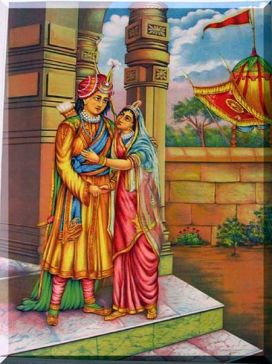
On this day, Sri Rama with his consort , on return from years of exile and vanquishing the demon king Ravana ,was enthroned in Ayodhya
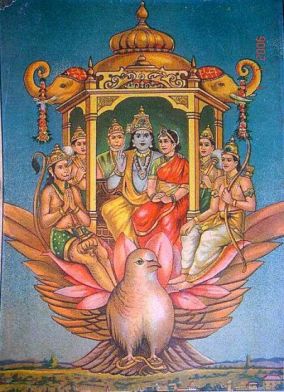
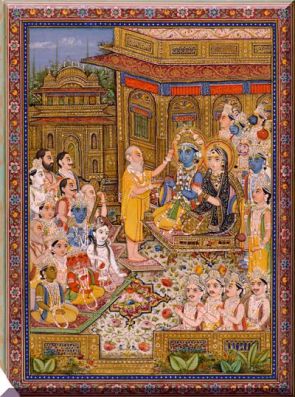
It was on this day the Goddess Durga mata destroyed horde of evil forces, restored light and hope in the hearts of the virtuous. It is a day of victory and rejoices.
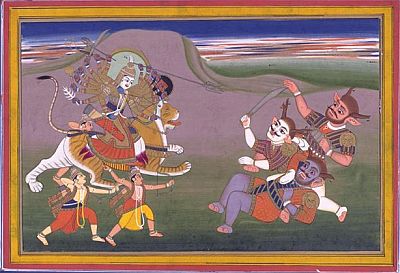
The later month of Sharad Ritu is Karthika, the month of the infant commander of the divine forces, Karthekeya the vanquisher of evil and darkness. Karthika is the month of lights. Numerous Little lamps are lit in homes and temples to dispel darkness and ignorance.

Karthik-ki-chauth (Karwa chauth) the fourth day after new moon in Karthika is the day when women in the North and Western parts of India fast and pray in loving devotion for the longevity and prosperity of their husbands.
Sharad Ritu, which commences on a pious note of devotion and fulfilment peaks into a burst of sparkling and spectacular lights and lavish celebrations. Deepavali or Diwali certainly is the most popular and the noisiest of Hindu festivals. Deepavali (array of lights) is a festival of four days, which literally illumines our hearts, homes and streets; dazzles with sparklers and firecrackers; and draws friends and neighbors together in a net of goodwill. It also signifies victory of good over evil, delivering from darkness and leading towards light. It is a festival in celebration of life, its goodness and fulfillment.
As Sharad Ritu nears its end, the leaves on the trees turn from green to yellow to red and to dusty brown. The trees let go the aged leaves, that once clothed, fed and sheltered them; with grace and gratitude. They gently place the departed friends, with reverence, on the floor.

If the spring signifies the exuberance of youth; and the sizzling heat of summer, downpour of the monsoon represent the rigors, vicissitudes and uncertainties of life; Sharad Ritu is the mellow maturity and fulfillment of life before it slides into its evening. It inspires a sense of amazement, grace and reverence towards life. It is the golden mean, away from extremes of burning passions and debilitating regrets. It is the summation of the quality life.
Our seers visualized a life worth- living as spans of Sharad Ritu; not merely, because it is the most enjoyable season but also because it suggests an interpretation and a sense of balance that life should have. That perhaps was the reason our ancients measured meaningful life spans as representations of Sharad Ritu. A young person on threshold of life greets his beloved at the time of wedding “Oh! The auspicious one, the cause of my life, may we live to see a hundred Sharad seasons (subhage, tvamjeeva sharadahshhatam)”.
The Vedic aspirations of living a long, rich and purposeful life are expressed as enjoyment of life as in Sharad Ritu.
Paśyema śaradaḥ śataṁ| jīvema śaradaḥ śataṁ| budhyema śaradaḥ śataṁ| rohema śaradaḥ śataṁ | pūṣema śaradaḥ śataṁ| bhavema śaradaḥ śatam | bhūsema śaradaḥ śataṁ| bhūyasīḥ śaradaḥ śatam | (AVŚ_19,67.1-8)
May we see a hundred Sharad Ritus. May we live a hundred Sharad Ritus. May we be wakeful in a hundred Sharad Ritus. May we ascend through a hundred Sharad Ritus. May we enjoy prosperous hundred Sharad Ritus. May we adorn a hundred Sharad Ritus .May we live more than a hundred invincible Sharad Ritus.

All pictures are taken from Internet.
Please do read